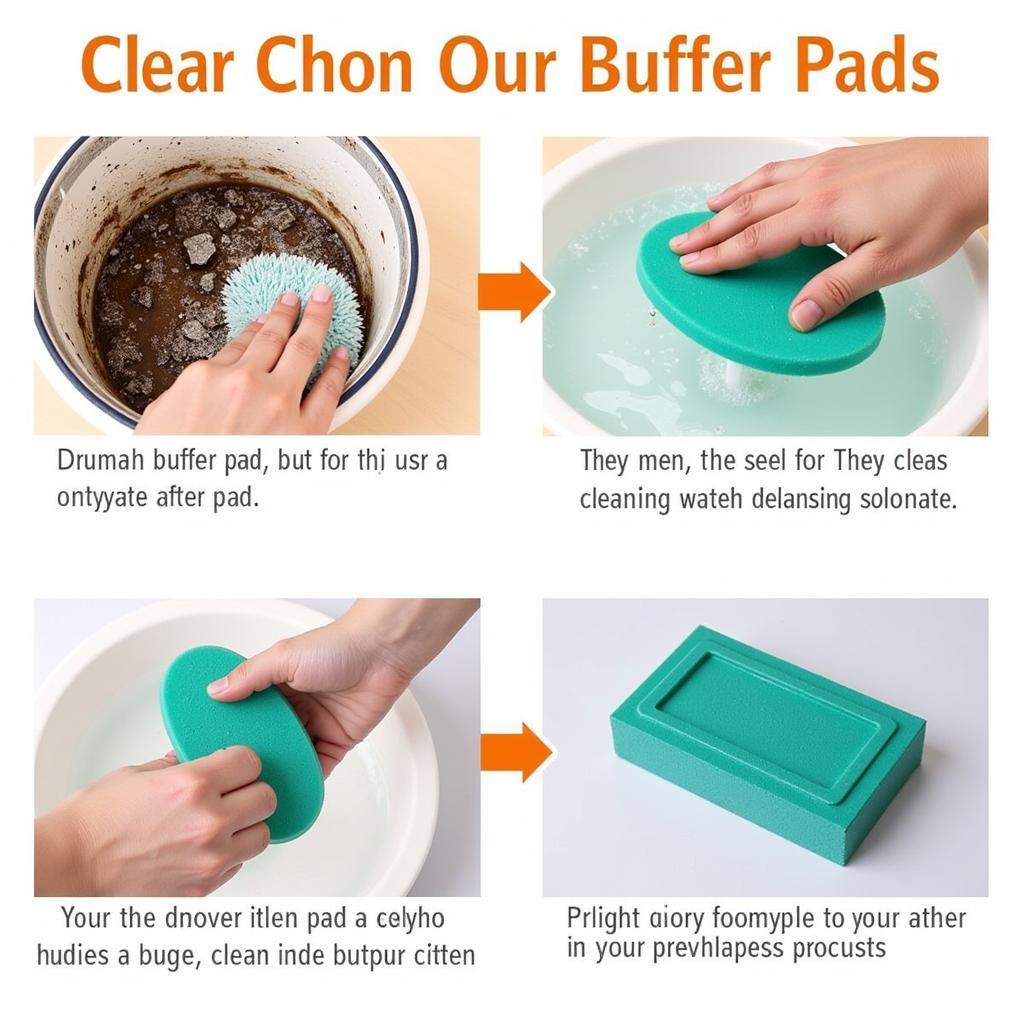Buffers are essential tools for any car detailing enthusiast or professional. They allow you to achieve a level of paint correction and shine that’s simply impossible by hand. Choosing the right buffer and understanding how to use it effectively can transform your car detailing results. This comprehensive guide will delve into the world of Buffers For Car Detailing, covering everything from the different types available to expert techniques for achieving a showroom-worthy finish.
Types of Buffers for Car Detailing
There are primarily two types of buffers used in car detailing: rotary and dual-action (DA). Each has its own advantages and disadvantages, making them suitable for different skill levels and detailing tasks.
Rotary Buffers: Power and Precision
Rotary buffers, also known as circular polishers, offer powerful cutting ability, making them ideal for removing heavy swirl marks and scratches. However, their high speed and direct drive require experience and careful handling to avoid damaging the paint. These powerful tools are preferred by experienced detailers who require maximum corrective power. Beginners should proceed with caution when using rotary buffers.
Dual-Action (DA) Buffers: Safe and Effective
high speed buffer for car detailing Dual-action buffers, also known as orbital polishers, are a safer and more user-friendly option. They use a random orbital motion that minimizes the risk of burning or swirling the paint, making them perfect for beginners and DIY enthusiasts. While less aggressive than rotary buffers, DA polishers still provide excellent correction and gloss enhancement. They are versatile enough for various detailing tasks, from applying wax to removing light scratches.
Choosing the Right Buffer Pad
The buffer pad you choose plays a crucial role in the effectiveness of your car detailing process. Different pads are designed for specific tasks and levels of correction. From aggressive cutting pads for heavy defects to soft finishing pads for final polishing, selecting the correct pad is essential for achieving optimal results.
How to Use a Buffer for Car Detailing
Proper technique is crucial for achieving a flawless finish with a buffer. Here’s a step-by-step guide:
- Prepare the surface: Thoroughly wash and dry the car. Remove any loose contaminants using a clay bar.
- Prime the pad: Apply a small amount of polish or compound to the buffer pad.
- Work in small sections: Divide the car into smaller sections to ensure even coverage.
- Apply even pressure: Maintain consistent pressure while moving the buffer slowly across the paint.
- Inspect regularly: Check your work frequently to avoid over-polishing or burning the paint.
- Wipe off residue: Use a clean microfiber towel to remove any remaining polish or compound.
Common Mistakes to Avoid
Even experienced detailers can make mistakes when using buffers. Here are some common pitfalls to avoid:
- Using too much pressure: Excessive pressure can damage the paint and create swirl marks.
- Working too quickly: Moving the buffer too fast can lead to uneven results and missed spots.
- Using the wrong pad: Choosing the incorrect pad can either be ineffective or cause damage.
- Ignoring paint temperature: Working on hot paint can make the polish dry too quickly and be difficult to remove.
car detailing lessons Are you a novice detailer? Taking car detailing lessons can equip you with the knowledge and skills needed to achieve professional-level results.
Maintaining Your Buffer
Regular maintenance will ensure your buffer performs optimally for years to come. This includes cleaning the pads after each use and lubricating the moving parts as needed.  Cleaning Buffer Pads after Car Detailing
Cleaning Buffer Pads after Car Detailing
“A quality buffer is an investment that will pay for itself many times over,” says renowned detailing expert, John Smith, owner of Smith’s Auto Detailing. “It allows you to achieve a level of finish that elevates the entire look of the vehicle.”
Conclusion
Buffers are invaluable tools for achieving a truly professional car detailing finish. By understanding the different types of buffers, choosing the correct pads, and employing proper technique, you can transform your car’s appearance. Buffers for car detailing are essential for anyone serious about car care. Remember to invest in a quality buffer and learn the necessary techniques for optimal results. free car detailing course online Are you looking for some free guidance? A free car detailing course online can provide invaluable information and improve your technique.
FAQ:
- What’s the difference between a rotary and DA buffer?
- How often should I change my buffer pads?
- What type of polish should I use with my buffer?
- Can I use a buffer on all types of car paint?
- How do I clean my buffer pads?
- What is the best buffer for a beginner?
- How do I avoid burning my car’s paint with a buffer?
Need further assistance? Contact us via WhatsApp: +1(641)206-8880 or Email: [email protected]. Our 24/7 customer service team is ready to help.

Leave a Reply